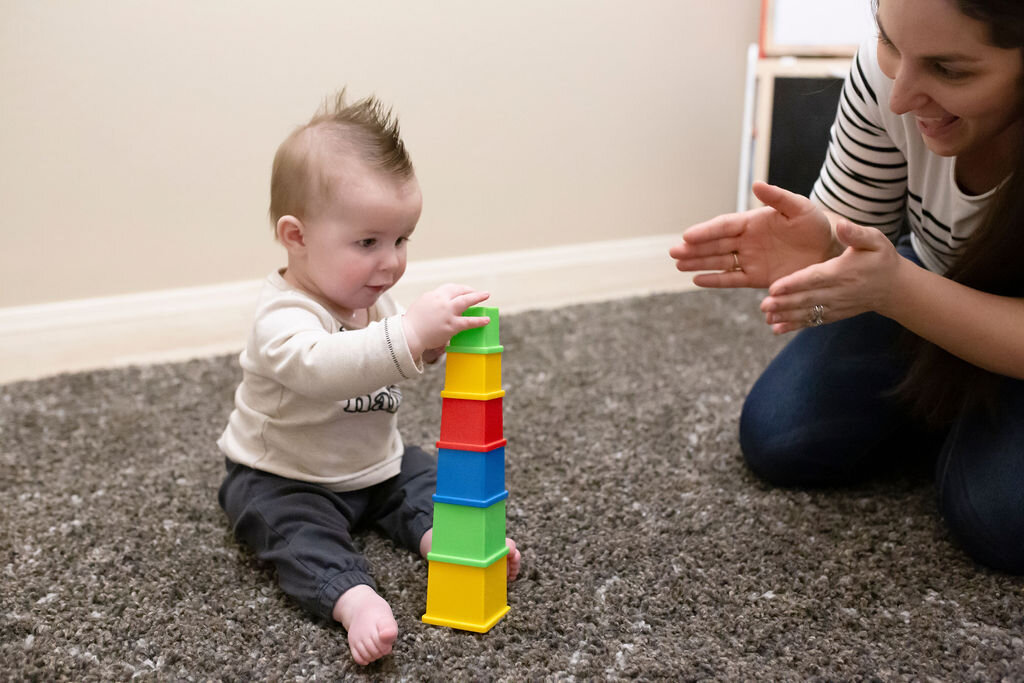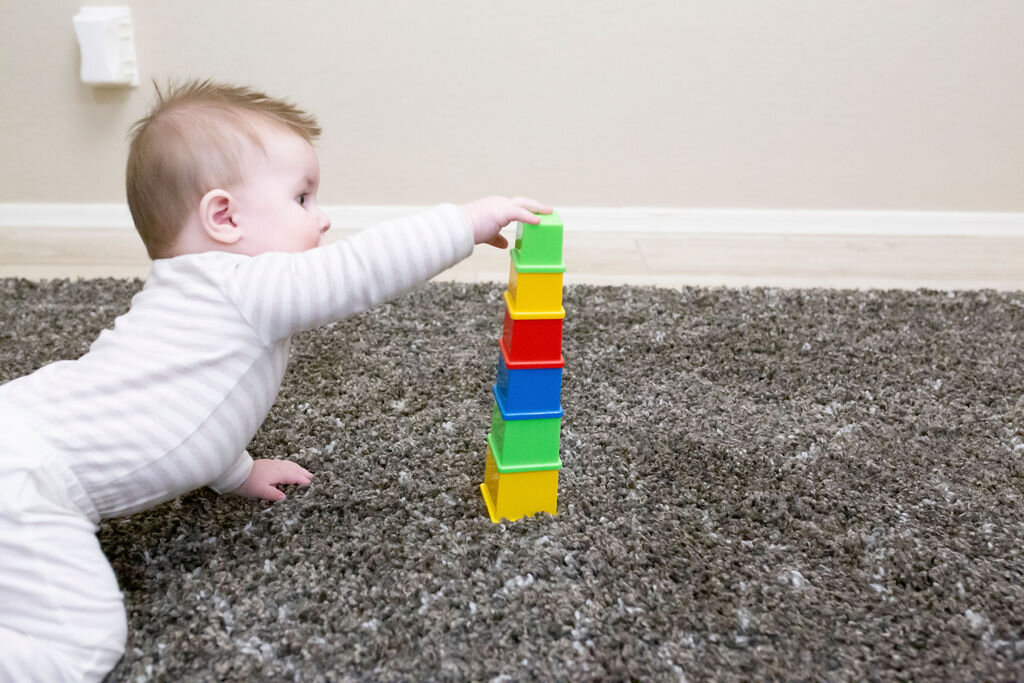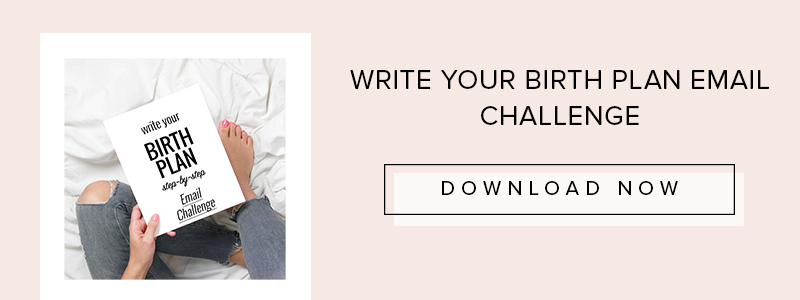Everything You Need To Know About Baby Language Development
If you’re a first time momma, it’s likely that you are waiting for the magical moment. The one you have probably been dreaming of since you found out you were expecting, maybe even before and for those of us who have multiple kiddos we’re looking forward to the joy of re-experiencing that special time when your sweet baby finally does it. You’ve been drilling and drilling them and all your hard work pays of when that cute little face looks up at you and says “mama”. I don’t know about you, but for me, the first time my son used language with intent, it was a great big “Oh happy day!” around here! Language development during the first year of life is one of the greatest wonders of infancy and for many, parenthood. BUT as with many of the joys of parenthood, language development may come with a slew of questions and all the worries. Well mommas, don’t you fret! As your resident Speech-Language Pathologist here on Momma Society, I am here to share some tips and activities to stimulate and support language development for your littles.
From baby coos to “I Love yous”
But first! A little over view of some milestones in your baby’s first year of language development:
In those precious first six month’s of your child’s life your baby is a tiny (and very adorable) sponge. Infants’ comprehension of language begins long before they begin producing meaningful speech. This is not to say young infants communicate, from early on caregivers can often decipher a wide range of noises and cries their baby makes to mean hunger, pain sleepiness or contentment. All these different cries, grunts, sighs and sucks are helping to increase your baby’s awareness of their ability to communicate.
I don’t know about you, but the first time either of my boys cooed their sweet little coos it melted my heart! These adorable little sounds are not just really cute, ok really, really cute but they are your baby’s first attempts at varying their vocalizations. Your little one will often find these vocalizations entertaining and repeat their “ooos” and “aaaaas” with much excitement for you and baby. By taking turns with a caregiver cooing back and forth, your baby begins to learn the flow of the exchange of communication including pausing, and pace. Your baby will also be exploring facial expressions and enjoy being smiled at as well as smiling back at you!
About half way through your baby’s first year, he or she will begin make a wider range as well as more elaborate sounds including “raspberries’” in which their lips make contact and with added vibration they discover they can make a really fun and exciting new sound. They may make high-pitched squeals or screams and you may notice an increase in the fluctuations of your baby’s intonation. These new and thrilling developments are known as vocal play, and you will love them as much as your baby does. Around this time you may also get a glimpse of some gesture imitations such as a wave “hi” or “bye” when a familiar person enters or leaves the room.
Between six to nine months, your little one will begin to babble, and babble, and babble! In this time, baby will enjoy combining consonants and vowels into strings of vocalizations and repeating consonant vowel combinations such as “dada” or “baba” and later, varying consonant and vowel combinations such as “kada ma ba”. Between 9 and 11 months, your baby can begin to imitate non-speech sounds as well as inflections, rhythms and expressions of their conversational partners.
Near their first birthday, little ones begin to use words or partial words to convey their wants and needs such as “mik” for milk or “googee” for cookie. Between 12 and 13 months infants one or many words or holophrases (a single word or utterance used to convey complete thought) to communicate with those around them. These utterances or holophrases are anything a baby verbalizes consistently to describe a specific person, place or object and just about 100% of the time, these little utterances are too cute for words!
So what can you do to support your little one in their development of speech? Don’t worry momma, I got you covered! Check out these suggestions to boost your infant’s language development.
Get to Talking Momma!
As I mentioned earlier, babies are little sponges always absorbing the world around them. Talk to your baby all day, every day! Tell them about the weather, talk to them about the cute outfit you’re dressing them in from their grandma or favorite auntie. Even though your little one may not understand what you are saying, they will love hearing the sound of your voice as your pitch rises and falls and seeing the expression on your face change while they watch the movement of your mouth. Researchers have found that when mother frequently spoke to their infants, their children learned almost 300 more words by age 2 than did their peers whose mothers rarely spoke to them. Huttenlocher et al., 1991. Early vocabulary growth: Relation to language input and gender. Developmental Psychology, 27, 236-248. Isn’t it incredible how powerfully you can impact your infant’s development just by talking with them? That. is. amazing.
Copy Cat
In their first year of life, your baby will demonstrate frequent imitations of your facial expressions, verbalizations and eventually words. The number one thing I tell new parents when asked how to support their infant’s language development is let your baby take the lead! Your little one will love engaging in vocal play and when they do, copy every sound they make. This encourages your baby to imitate the sounds and words YOU present to them as well as laying the foundation for the back and forth exchange of conversational speech. And lets face it, you might feel a bit silly BUT you’ll have as much fun as they will mimicking those sweet little baby noises.
Label, Label, Label!
Share new words with your baby by naming common/familiar objects, toys, foods and people. Try this when your baby is at play by recognizing their interest in a toy or object, first imitating their vocalizations while interacting with that object, then presenting your baby with the common name for that object. Remember, your baby is learning new things every day, and repetition is key. Present your baby with the name of the object 3-5 times while interacting with it. For example, if your baby is playing with a car you might say “Car. You like the car? What a fast car! I like that car!” I love to use family photo albums to introduce and increase their awareness of names of family members. Be sure to have your baby’s attention and eye contact while presenting new words.
Play together!
Now we’re getting to the good stuff! During playtime, present your baby with various stimuli to interact with such as toys of varied textures, mirrors, noisemakers, windup toys or cars. Select activities that encourage joint attention, or activities that require a shared focus between you and your little one such as blowing bubbles, rolling a ball back and forth, singing songs, playing “peek-a-boo” or using simple rhymes such as “Round and Round the Garden” and “Pat-a-cake”. Hiding a desired toy or object under a blanket and helping baby to search for it is a fun and exciting way to promote object permanence, which is your baby’s understanding that an object exists even when it is out of the their view. It also relates to the actions a child can place on objects, and spatial relations. Your baby may use this skill to search for a toy that has rolled under the couch, searching for your face to reappear when playing “Peek-a-boo”. The awareness of object permanence goes hand in hand with causality, which is a skill that involves the child’s awareness that they are one of many objects in the environment, and that their actions cause effects on other objects. A baby that has developed causality will understand that a certain word, action or behavior will result in a desired outcome such as saying the word “more” will get them more snack. If your baby becomes disinterested in these activities, follow their lead by narrating their actions at play or your own! See my list of recommended toys below for infants in the first year of life!
Story Time
Introduce your baby to a vast amount of printed literature. Books with that are brightly colored with large, simple images and short sentences are best! Label the images you see with your baby, remembering that repetition is key! Don’t be hesitant to talk about the image you see and provide your baby with the name for that object 3-5 times. This helps your baby become familiar with the sounds and rhythms of speech and boosts their receptive language. I always recommend to parents that a great times to read to their infant is just before sleep. Young babies are napping several times a day, providing plenty of opportunities for exposure to literature. Once your baby has established a great routine for reading before sleep, expand this activity to at least three times through out your regular daily routine. Reading to your little one is one of the BEST things you can do for them in their first three years of life and beyond!
There they are! A few pointers to get those talkers talkin’!
Below I have shared with you some of my favorite and well loved toys for promoting speech and language development in the first 12 months of life.
The best toys for promoting speech and language
Shape Sorters
One day very soon, your little one will be naming shapes and colors like a breeze. Birth through 12 months of age is not that time. However, shape sorters are the perfect toys for infants 6 months or older who have perfected the art of sitting up unassisted. Not only are shape sorters are wonderful toys for promoting fine motor and cognitive skills, they really hone in on those joint attention skills and baby’s awareness of object permanence. As your baby begins to use 1-word utterances their language skills may surpass their current fine motor skills and they can be encouraged to request “help” while interacting with this toy.
Baby Mirrors
Using a mirror during play with your baby is a fantastic way to boost social communication as well as providing your baby with a model for speech production and joint attention. Take turns smiling at your baby, saying his or her name, making silly faces or imitating babies vocalizations and expressions. This Sassy-Floor mirror is adorable, but any mirror will work fabulously!
Stacking Cups
Stacking cups are wonderful for your building your baby’s fine motor abilities but also their language development. While interacting with stacking cups, your baby is participating in a fun, joint attention activity. When I work with stacking cups, I sit across from the child and start with the bottom block placing the first cup on a flat surface stating “up”. This typically envokes a look from the baby and once I have their attention, I continue the activity providing this model for each cup or block I stack. Using a very slowed rate of speech and providing 10-15 seconds between stacking each block will boost your baby’s joint attention abilities and when they near their first words, this pause will allow them to follow your model of speech and eventually produce the word “up” to request continuation of this fun activity. After your baby has mastered and loves this activity, you can witch it up by beginning to hide common objects like play food or animals under a block, asking your baby to find it! They will love to discover where you have hidden the surprise toy and will have a fantastic introduction to prepositions (in, out, on, under etc.) as well! I LOVE these Playskool-Play-Favorites stacking cups because they are brightly colored to hold baby’s attention, they have a self correcting rim around the top of each block to aide babies still mastering the fine motor task of stacking a block and they are not overly busy to avoid breaking baby’s attention.
Wind Up Toys
Cause and effect toys such as wind up toys are perfect for establishing that “I do something, then something happens” effect of social communication. We wind up our toy then it moves; we say something, so our conversational partner responds. Wind-up toys are great for promoting a joint activity with your little one and they allow for some really great pausing time to encourage requesting. These adorable Caterpillar Carley Windup toys are my favorite because their cute little scrunchy walk is so exciting for babies and they don’t run away too quickly for littles to catch them! When I am using these toys with clients or my own kiddos, I start by winding the toy, then I gain baby’s eye contact and give them a visual stimulus with my fingers as well as counting “1-2-3”, then I will pause to allow for requesting time (no matter the baby’s age) then excitedly shout “Go!” while baby giggles and giggles.
Songs and Hand Puppets
Whether you are you are a Grammy award winning singer….or you save most of your singing for the shower baby will love hearing your voice and repetitive songs are a great way to boost baby’s language development. One of my favorite songs to sing with little ones is “Old Macdonald” as it is very repetitive to allow little ones to set expectations for words and animal sounds coming next and eventually encourage them to produce those words or animal sounds themselves. This Old Mac Donald Little Scholastic Hand Puppet is an interactive way to engage your baby in song singing, introduce animal names and sounds and entertain your little one simultaneously. When using this hand puppet, I use an extremely slowed rate of speech to encourage learning as well as extended during the presentation of each animal to allow for the infant to eventually produce the animals sound themselves. This might look like “Old Mac Donald had a farm E-I-E-I-O and on that farm he had a cow E-I-E-I-O with a moo moo here and a [LONG PAUSE] moo moo there” continuing this structure for each of the animals.
There they are mommas! Keep in mind that this brief overview of language development in the first year of life is a general description and not every baby fits into this description perfectly. I hope that the tips and tricks for promoting language are activities you are able to incorporate into your daily routines. Get creative with the toys you already have in your home when interacting with your baby and check out the toys listed above for some fresh ideas!







